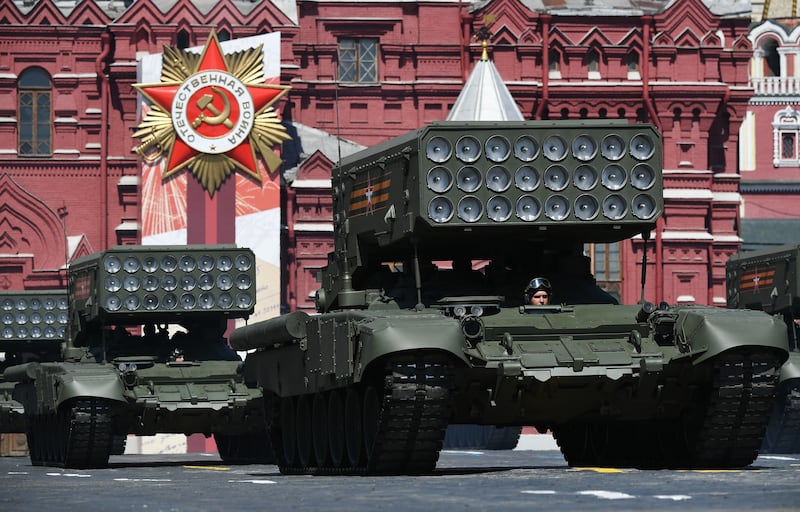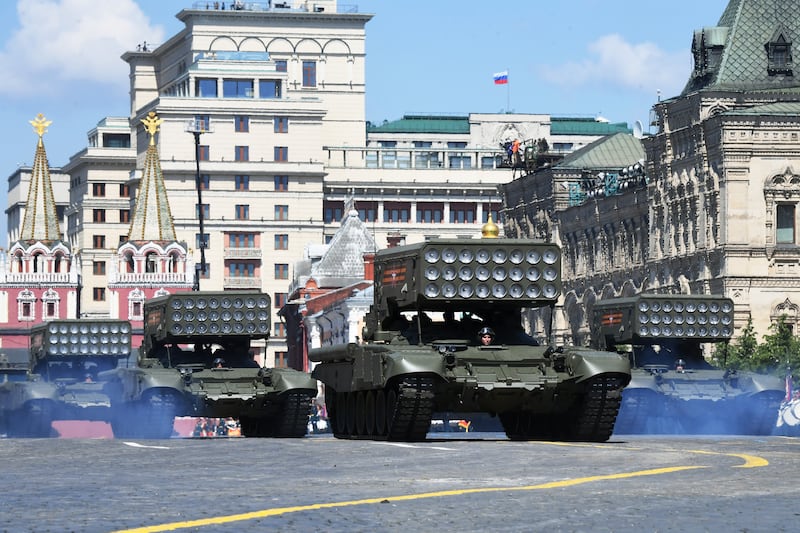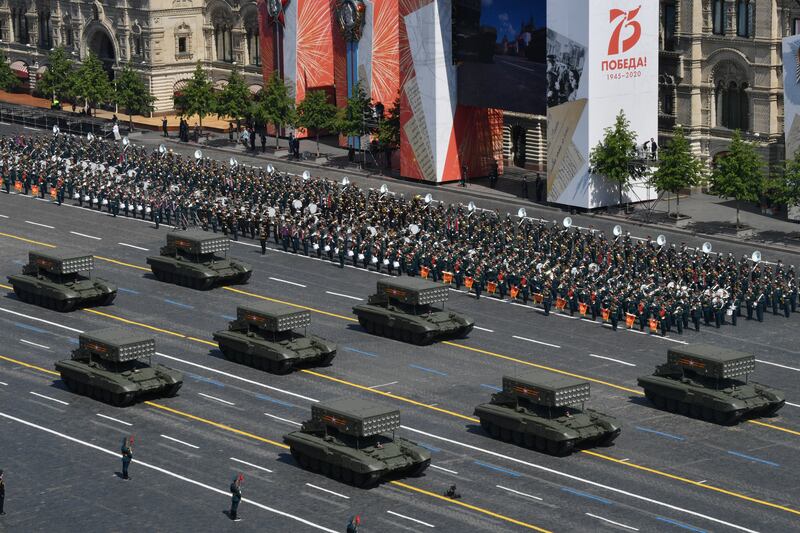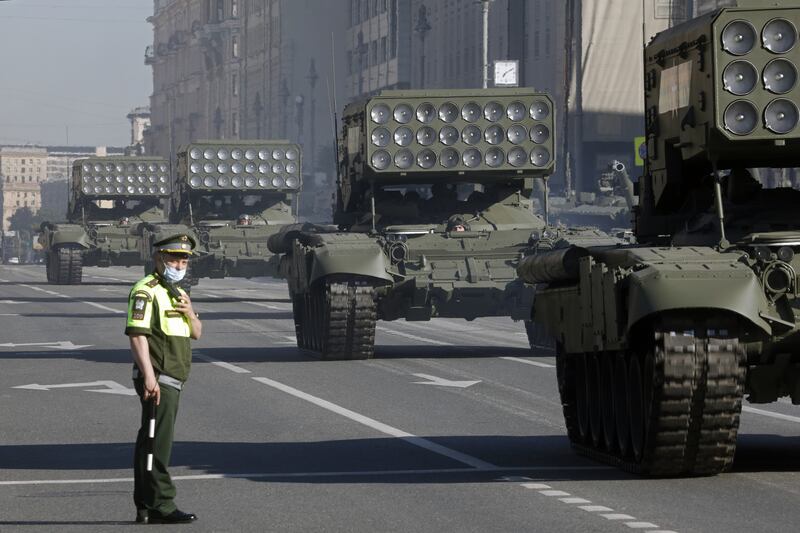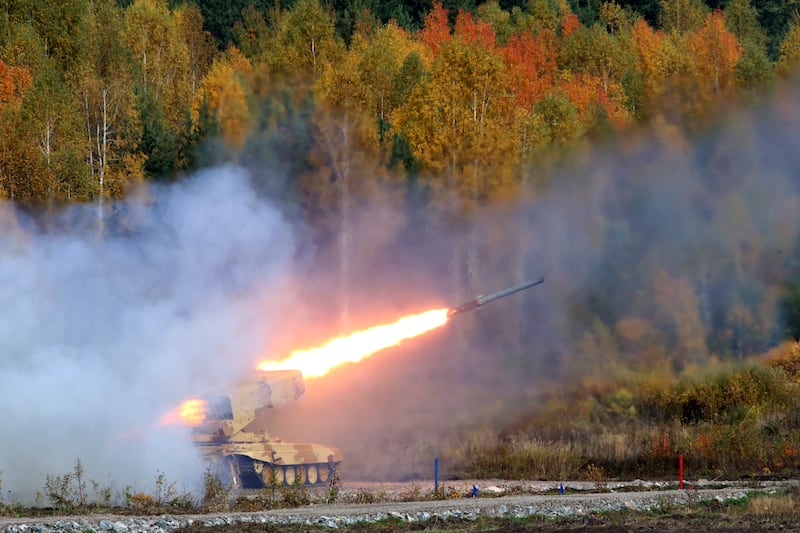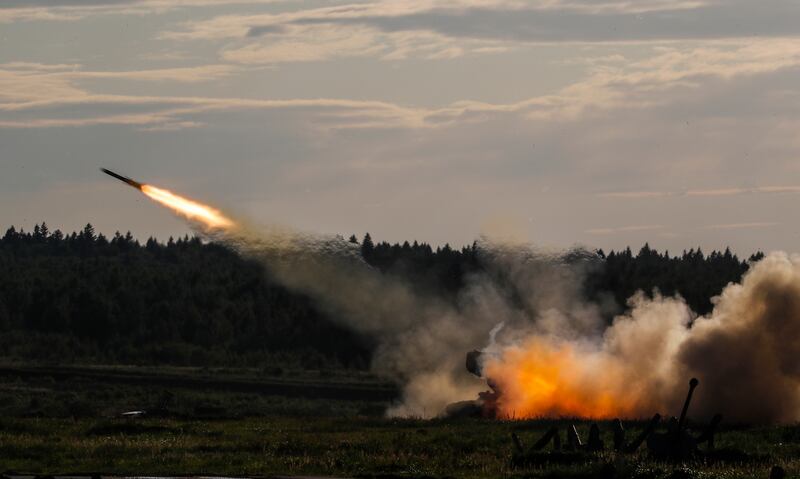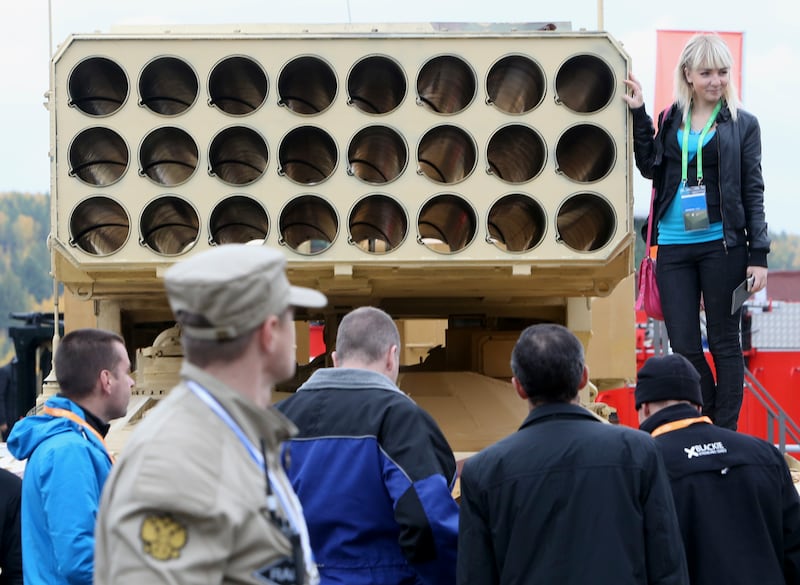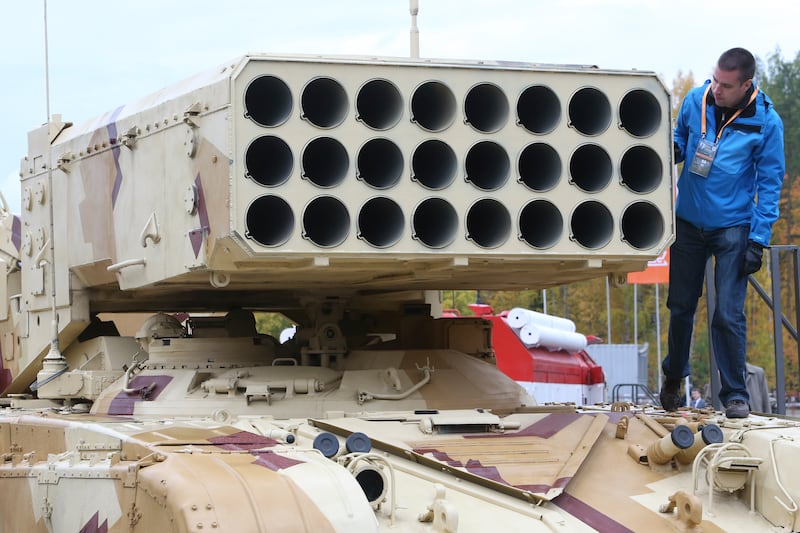Live updates: follow the latest news on Russia-Ukraine
The war in Ukraine has shocked the world with the intensity of ongoing violence but is quickly taking on a more dangerous turn, with the introduction of the Russian TOS-1 Buratino missile launcher.
The multiple launch rocket system (MLRS) consists of a box of rockets mounted on a tank chassis, and can rain 24 220mm thermobaric rockets onto enemy positions — a terrifying prospect in the event of urban war where hundreds of civilians have already become casualties.
What is a thermobaric weapon?
Thermobaric weapons are what military experts call fuel air explosives; they create a cloud of explosive aerosol that spreads out before being detonated.
The resulting shockwave is more powerful than that caused by conventional solid explosive, crushing anything nearby and sucking oxygen from the air — causing horrific asphyxiation for anyone within its target zone. This effect has led them to be dubbed "vacuum bombs".
Despite its terrifying reputation, the system is actually quite short range, designed to engage targets out to around 6,000 metres.
That is ample in the event of a close-range urban battle, but could leave it vulnerable to infantry attacks, provided they can get close enough, unlike conventional artillery which can be tens of kilometres from the front lines.
Can vacuum bombs change the outcome in Ukraine?
Russia’s logic behind deploying the system will be to degrade the morale of Ukrainian soldiers — a full salvo of the system can level city blocks and smash trench lines.
Russian forces in tanks and armoured vehicles will then push forward to wipe out any demoralised survivors, part of a doctrinal belief in what US military think tank Rand called “a heavy emphasis on massed indirect fires…with the effects of these fires exploited by highly mobile vehicles with substantial direct fire capability”.
But this approach can put a strain on logistics over long distances, because multiple rocket launchers like the TOS-1 need constant resupply. Whether this will be an additional challenge for the Russians remains to be seen, but the deployment of the Buratino marks a dangerous escalation in the war.
What other weapons has Russia deployed?
The Buratino is also not the most powerful MRLS being deployed. The Russian BM-30 Smirch system fires larger, longer-range 280mm rockets, which can deploy cluster bombs or be used as a thermobaric weapon, like the Buratino.
More useful to the Russians than these systems could be the older BM-21 Grad MLRS, or “hail,” system which can rain down 40 122mm rockets in a matter of seconds. Russia has a vast arsenal of these weapons – tens of thousands of units have been built since the 1960s. Ukraine also has the system, but in much smaller numbers.
In 2014, at least 37 Ukrainian soldiers were killed and more than 100 injured in Zelenopillia in a massed Grad attack after drones spotted their base.
